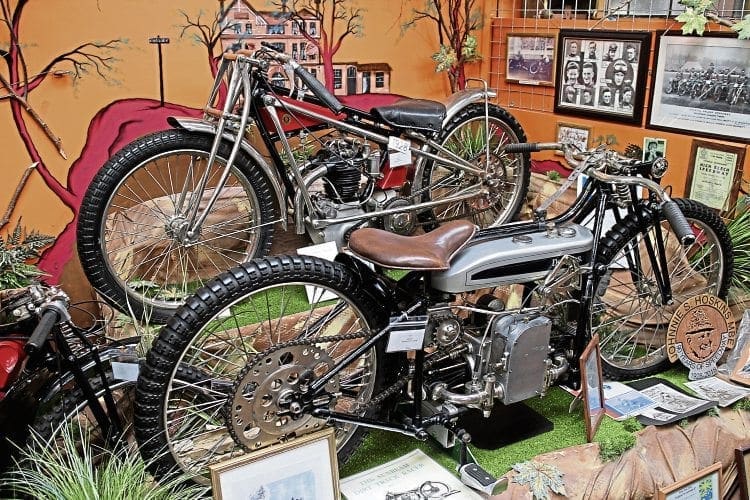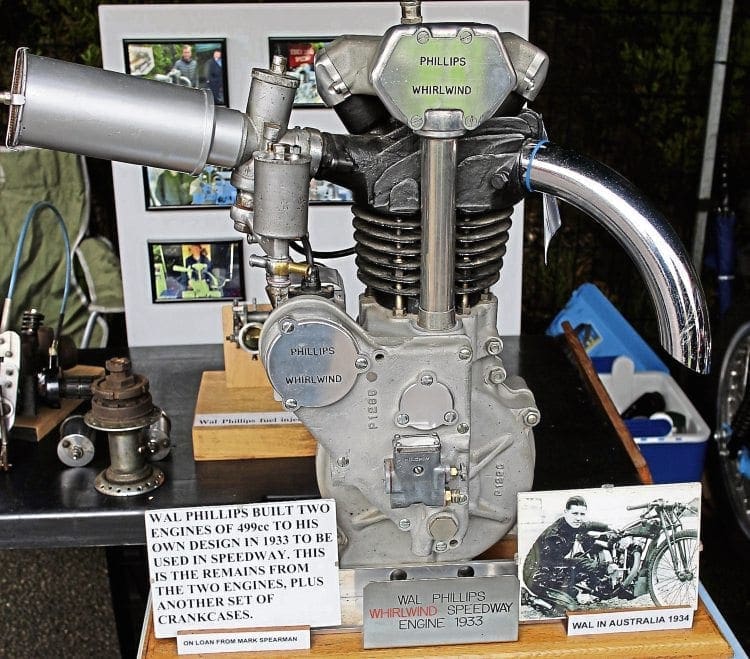A wildlife park complete with big cats – and other wild animals normally found at a zoo – is not somewhere you would normally expect to go for a celebration of 92 years of speedway. However, Ian Kerr finds that the explanation is simple, as the Paradise Wildlife Park near Broxbourne in Hertfordshire is also home to the Speedway Museum and the base for the World Speedway Rider’s Association (WRSA) who organised and hosted the February celebration, and it’s also not too far from High Beech, Essex, where the inaugural speedway event took place, back in February 1928.
Originally founded as the Veteran Speedway Riders Association in 1957 by broadcast journalist Peter Arnold, as a means of riders and officials keeping in touch with each other, it changed to WSRA in 2006 to attract a younger membership.
It now has over 500 members worldwide with many social activities and its own magazine edited by one of the driving forces of the organisation, former world-class rider Bert Harkins.
Enjoy more Old Bike Mart reading every month.
Click here to subscribe & save.
The museum itself is relatively small and compact, and every inch of space is just crammed with memorabilia from the many decades of the sport.
Although various areas are dedicated to a particular aspect – like the famous Wembley Lions, who were the dominant London team in the late Forties and Fifties – you really have to stand and examine the displays to pick out the really good stuff.

In many ways it is complete sensory overload and you can miss stuff as your eyes are drawn to the bikes, colourful riders’ bibs and masses of trophies on display from some of the greats like Ivan Mauger, although the trophies won by the late Simon Wigg seem to eclipse the numbers on other displays by a massive margin.
Walking around the well-lit museum you can trace the evolution of the bikes themselves from dirt track Douglas’s and a Rudge, JAP-engined mounts and Weslakes, before getting to the bikes built by Jawa, GM, ESO, etc.
There is also an excellent exhibit on the tyres used over the decades of the sport. Displays go right up the walls to the ceiling in some cases, with no space left unused.
But, if you take the time to look harder, you can find examples of the tools used to create the small fuel tanks for the bikes and an exhibit on ‘John the welder’ who made the steel shoes and other interesting features like the rattles carried by the fans, before air horns were invented!

Now, while the contents of this building are available to view throughout the year, the adjacent marquee was full of books, DVDs chronicling the past, and other goodies for those who wanted such memorabilia, and you could even book your trips for forthcoming modern speedway meetings in Europe.
A stage had also been erected where celebrities were being interviewed, including Egon Muller who was the main guest of honour.
You may remember that the German rode for several British teams in the 1970s, won the speedway world title in 1983, as well as three World Long Track championships in the Seventies, to mention just a few major championships.
Although long since retired, he has forged another career as an actor and pop star, and he gave the assembled crowd a few examples of his singing capability!
Outside in the car park, dodging the odd shower, were some impressive displays of speedway and grass track machines, old and new. Like any bike show these days, they ranged from the bright and shiny restored, to original barn find and working machines, with the odd bike for sale.
Like the permanent displays inside the museum, you could find JAP, Jawa, GM, and ESO engined bikes, along with some Japanese and German powered machines from the present.
Most of these, restored or not, took part in the regular hourly start-up session to give the appreciative crowd a healthy lungful of methanol and Castrol R!

But, like the museum itself, a little care in looking at the exhibits turned up some unusual machines like the Japanese Kyokuto bike. Roughly translated, the name means ‘rising sun’ and the family who produced it were called Honda, although no relation to Soichiro.
They produced a 350cc and 500cc motor and were successful in Japan, but attempts to establish themselves in the 1960s outside their own country were not that successful!
Rutland man, Les Staples, had an immaculate Velocette Venom-engined WHB grass track machine on display, along with a copper-plated frame, JAP-engined speedway machine and a few others.
Apparently WHB – which stands for WH Balderstone – were based in Peterborough, and it was campaigned originally by Dave Nourish. The bike has a Burman gearbox and a Norton clutch and is in full running order, and very different to the £40 that he paid for the frame!

Not a complete bike, or anywhere near it, was a 500cc engine on a stand built by Wal Phillips in 1933. Walter Hartley Phillips is, of course, perhaps best known for the injector he designed to replace the carburettor, but he was also a speedway rider who rode in the first World Championship in 1936.
He started riding at Stamford Bridge with Gus Kuhn, before riding for the Wimbledon Dons and represented England many times before he retired in 1937. His uncle was actually an engineer at JAP and responsible for engine development.
Phillips decided to build his own engine to be used in speedway machines and at Brooklands for racing and apparently most of the work was done by motorcycle manufacturers Blackburne, who were based at Bookham in Surrey, close to the track. Only two were ever built and it was mounted into a Rudge frame.
The engine, known as the ‘Whirlwind’, proved unsuccessful, partly because it was too heavy, but thanks to Ray Spearman, it got rebuilt after languishing in boxes for years.

A look at the castings shows that perhaps the intention was to incorporate an internal oil pump rather than run as a total loss item when further developed.
Another exhibit from Ray was the Wal Phillips rear disc brake, which was used on several sidecar machines.
Looking closely you can see the origins came from a pair of mole-grips (or similar) for the applicator apparatus, while the disc itself was attached to one side of the rear wheel rim.
It is very effective in operation and little pressure is required at the lever end, showing the engineering skill of its creator.
According to Ray, who was a personal friend of Wal’s and is chairman of the Essex VMCC section, these exhibits permanently live at the museum, along with an example of an injector.

Another exhibit that most people walked past outside were the original Wembley starting gates that were used throughout the Wembley Lions glory days.
Next to these sits the tractor that was used to grade the track, affectionally known as Arthur in tribute to Sir Arthur Elvin, the man who brought speedway to Wembley in 1929 and championed its success at the world famous twin towers, while taking the role of managing director of Wembley until his untimely demise in 1957.
So, while you may not get the start-ups, or the car park crammed full of bikes, all year, the museum is well worth a visit any time.

Or if you want the full monty, check out the WSRA website for details of such larger events at the museum like this reunion. Just one tip though, take the widest angle lens you have got if you want to take pictures inside!
View more images and read more News and Features at www.oldbikemart.co.uk and in the April 2020 issue of Old Bike Mart – on sale now!




